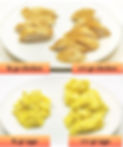
Hint - You do NOT have to count the calories.
A ketogenic diet helps your body to run on ketones instead of sugar from carbohydrates like pasta, grains or sugary foods.
Ketones are molecules produced by the liver when the body is in a state of ketosis. Ketosis happens when carbohydrate intake is extremely low, forcing the body to use fat as its primary fuel source instead of glucose or sugar (I use the words glucose and sugar interchangeably). The breakdown of fats produces ketones, which are then used as an alternative energy source, especially by the brain and muscles.
In a keto diet, the goal is to switch your body from burning sugar fuel to fat fuel. When a diet is referred to as “ketogenic,” it only uses a particular combination of foods that puts your body into ketosis.
Imagine you have 2 batteries inside your body. The Sugar Battery and Fat battery. The sugar battery is small, unreliable, it needs frequent charging and can stop powering you at any time. The Fat Battery is bigger, stable and reliable, it can carry you though out your day and activities.

Which one would you choose? Yes, the Fat Battery it is a non-brainer, and yet most of us use the Sugar battery.
The Sugar Battery is powered by carbohydrates. They can be:
Simple Carbohydrates: Sugar, honey, fruit, milk, and processed foods like candy, soft drinks, and baked goods.
Complex Carbohydrates: Whole grains (oats, barley, brown rice) and pulses (beans, lentils), vegetables growing blow ground (potato, sweet potato, parsnips).
We are literally swimming in carbohydrates. Think about when you go out to buy lunch. Most places offer mainly bread, pasta, rice or a combination of these, like in a burrito where you get both bread and rice, some protein toppings like ham, eggs, chicken and a bit of fat in the form of cheese and sauces. The typical macronutrient ranges are - Carbohydrates: 40-80g, protein: 10-30g and fat: 10-25g.
All these carbohydrates are then broken down by our digestive system into sugar. The amount of sugar we need in our blood to maintain normal levels is the equivalent of 1 teaspoon for all the blood in the body, which is about 5 litres. The average person consumes about 31 teaspoons of sugar and hidden sugar per day. This amount is toxic to the body. Just think what happens to a diabetic: vision, arteries, kidneys, nerve damage.
We think that energy can only come from glucose (sugar). But this is wrong. You can live without carbohydrates, there is no such thing as "essential carbohydrates". Sugar is a secondary fuel, the primary is ketones, which are the by-product of burning fat.
So how do you switch to fat burning?
This is simple, you just need to decrease the hormone called insulin. Insulin is your main battery switch, it determines whether you use the sugar battery or the fat battery. When insulin is high you burn sugar, when it is low you burn fat. I will be devoting a post to insulin as it is essential that we understand the role of this hormone.
For now, just remember that insulin is your key that you can use or not to switch on the fat burning battery. When insulin is high you burn sugar, when insulin is low you burn ketones.What is the main trigger for insulin? It is carbohydrates. This is why carbohydrates need to be kept low when you are on a keto diet.
What are the keto macros?

The chart shows rough percentages that may vary from person to person depending on your body size and activity level. It is better not to count calories as the purpose of food is to provide all the nutrients your body needs to sustain life, not to balance calories.
What does this look like on the plate?
On average you will be consuming between 85gr-170gr of protein per day. If you eat 3 meals a day, the quanswtity looks like below.
Protein amount



Fat amount
70% of fat might seem a lot but it is not really. Fat contains more than twice the calories per gram compared to carbohydrates and it is half the volume of carbohydrates. Below is an example of what your daily amount might look like.

Carbs amount
If you choose food with high level of carbs, 20% looks like below.

If you choose food with lower amount of carbs, 20% looks like below. Choose wisely!

The pictures are from Diet doctor.





